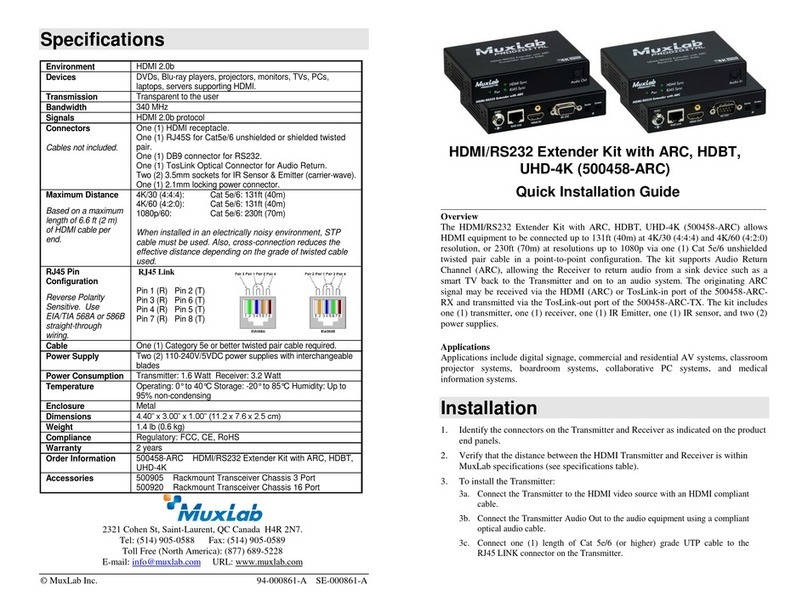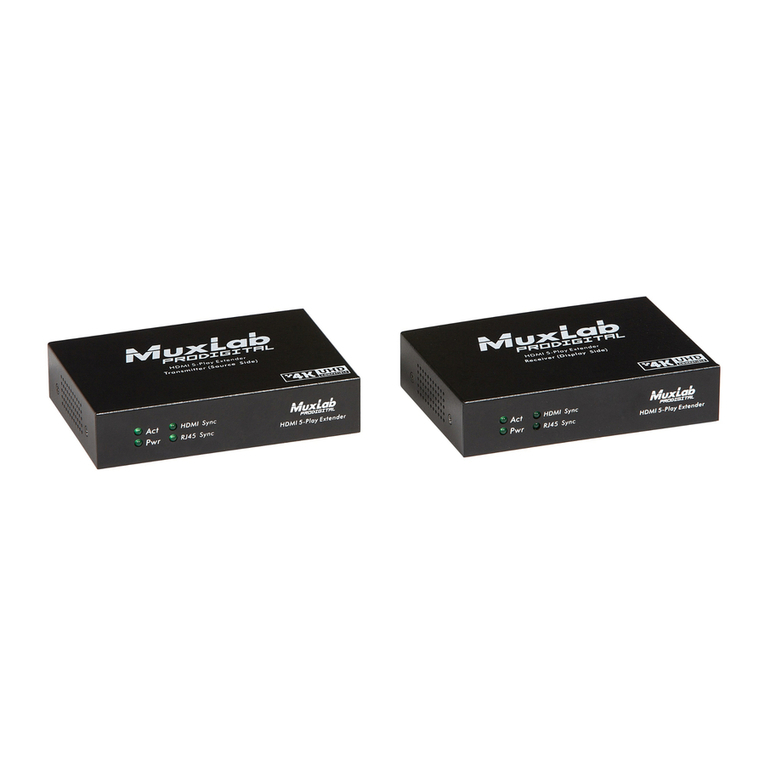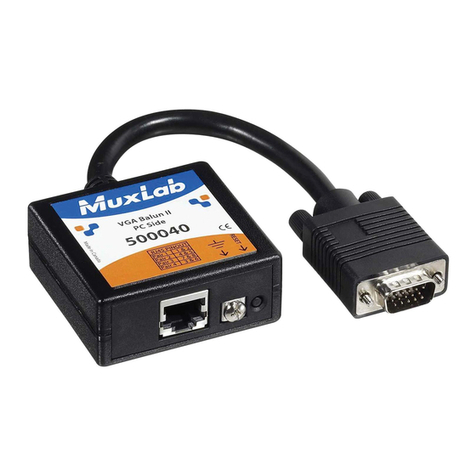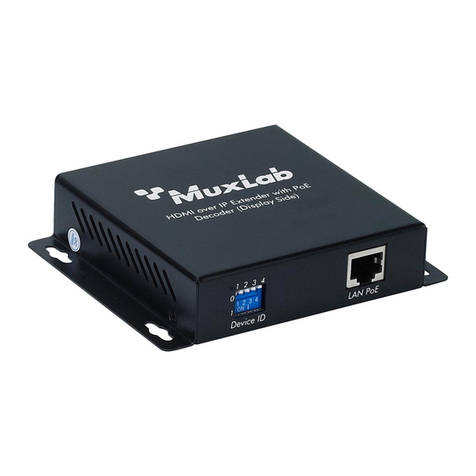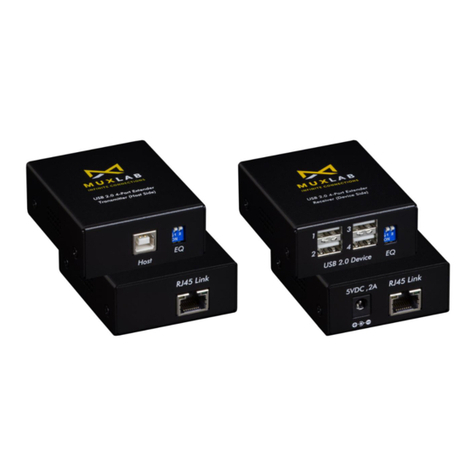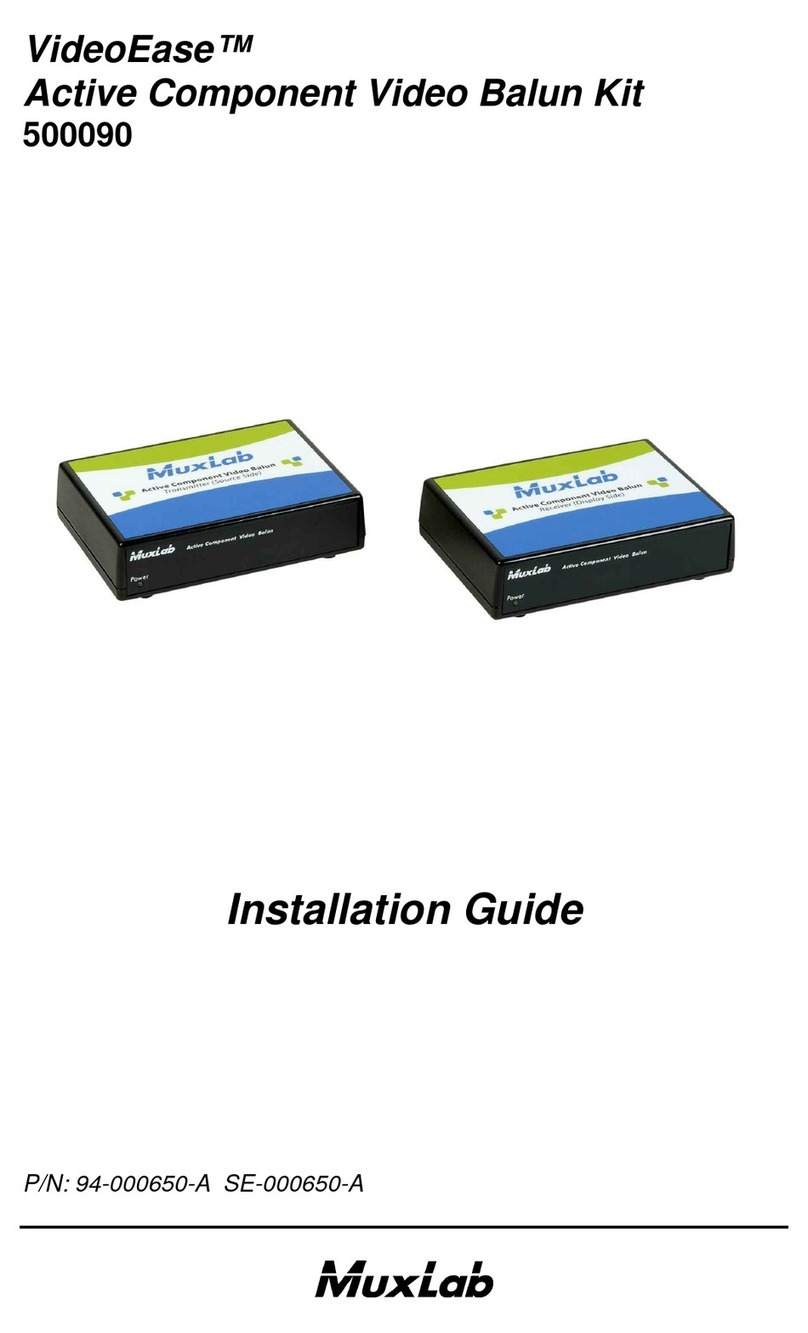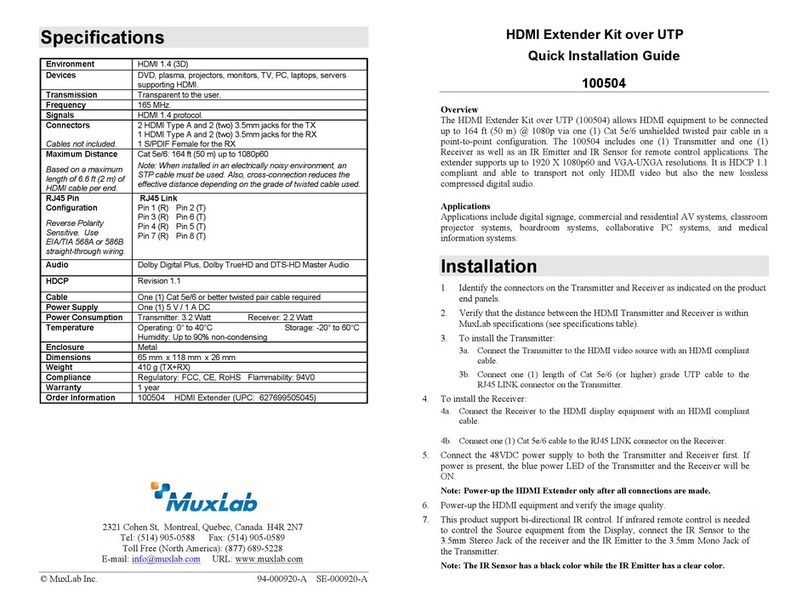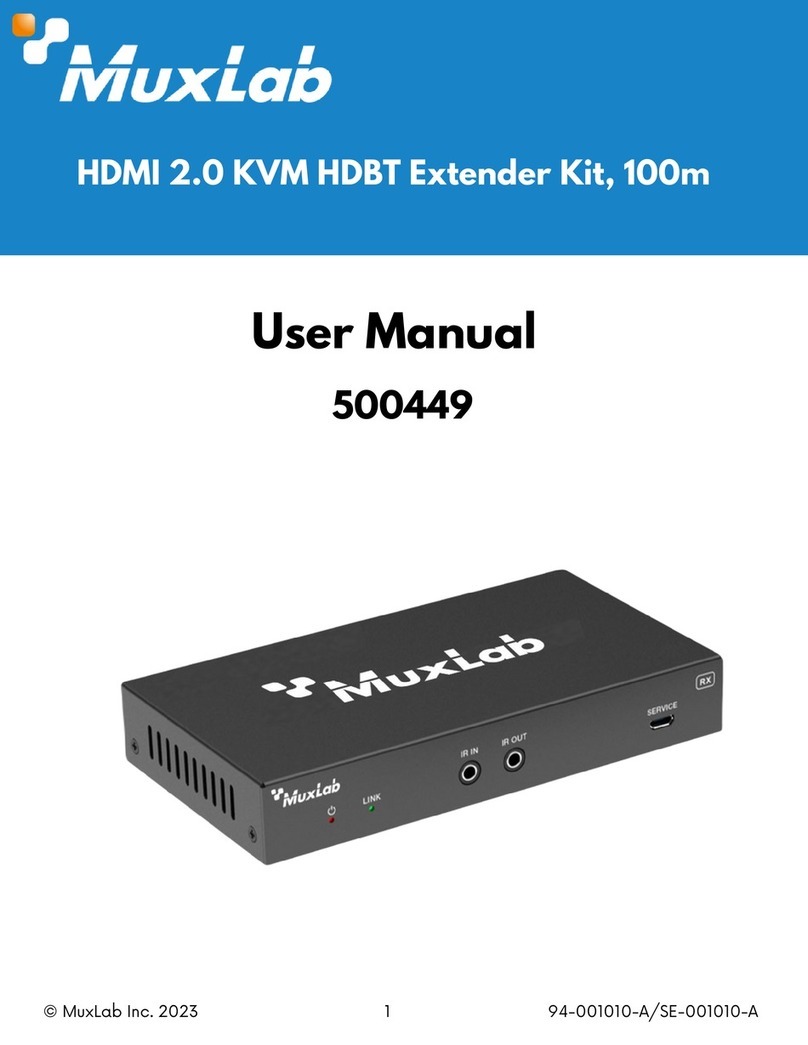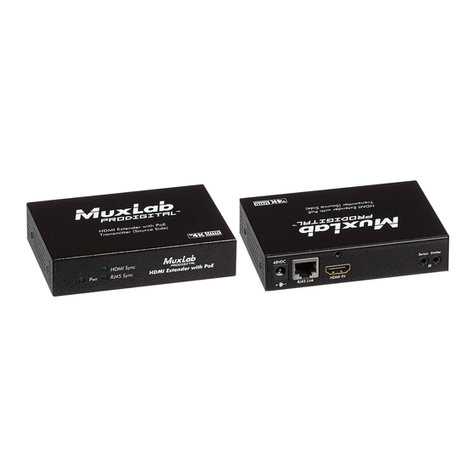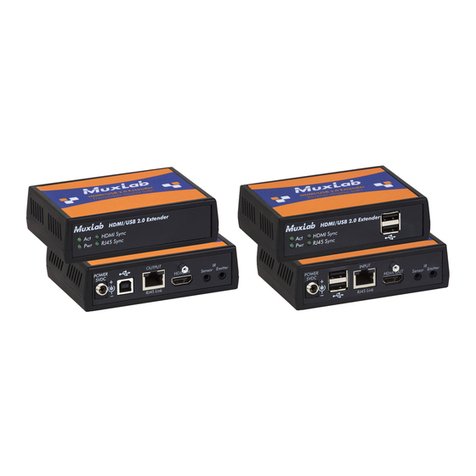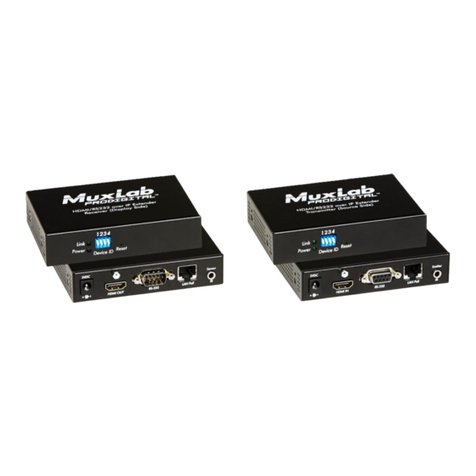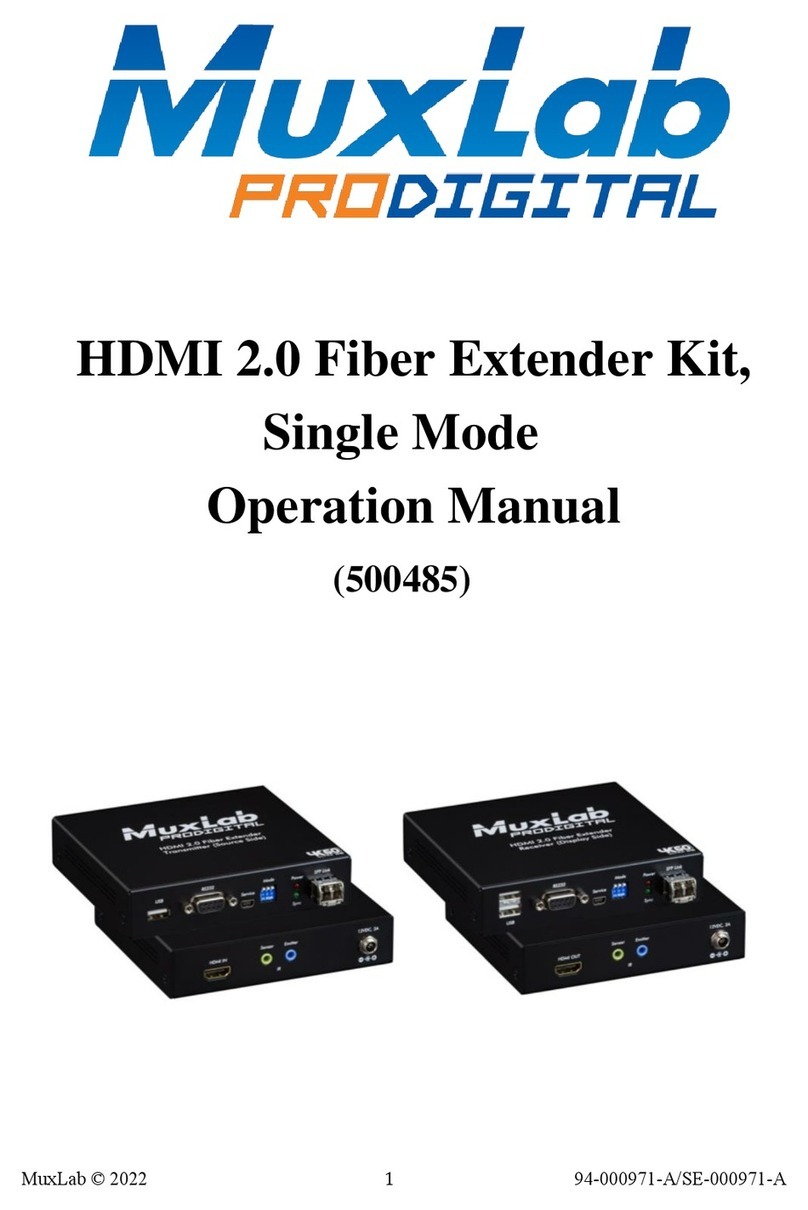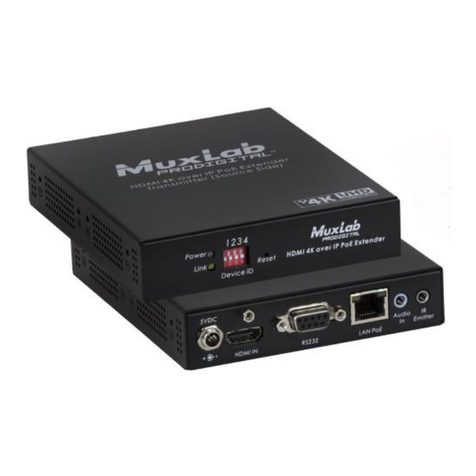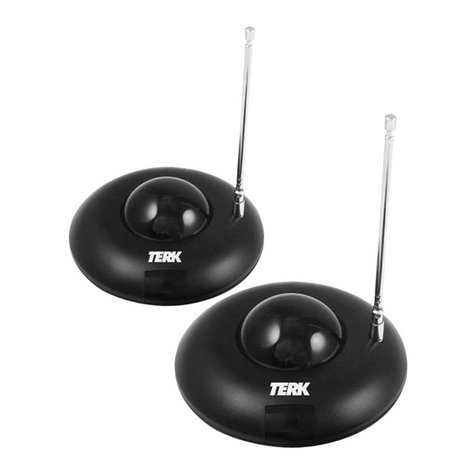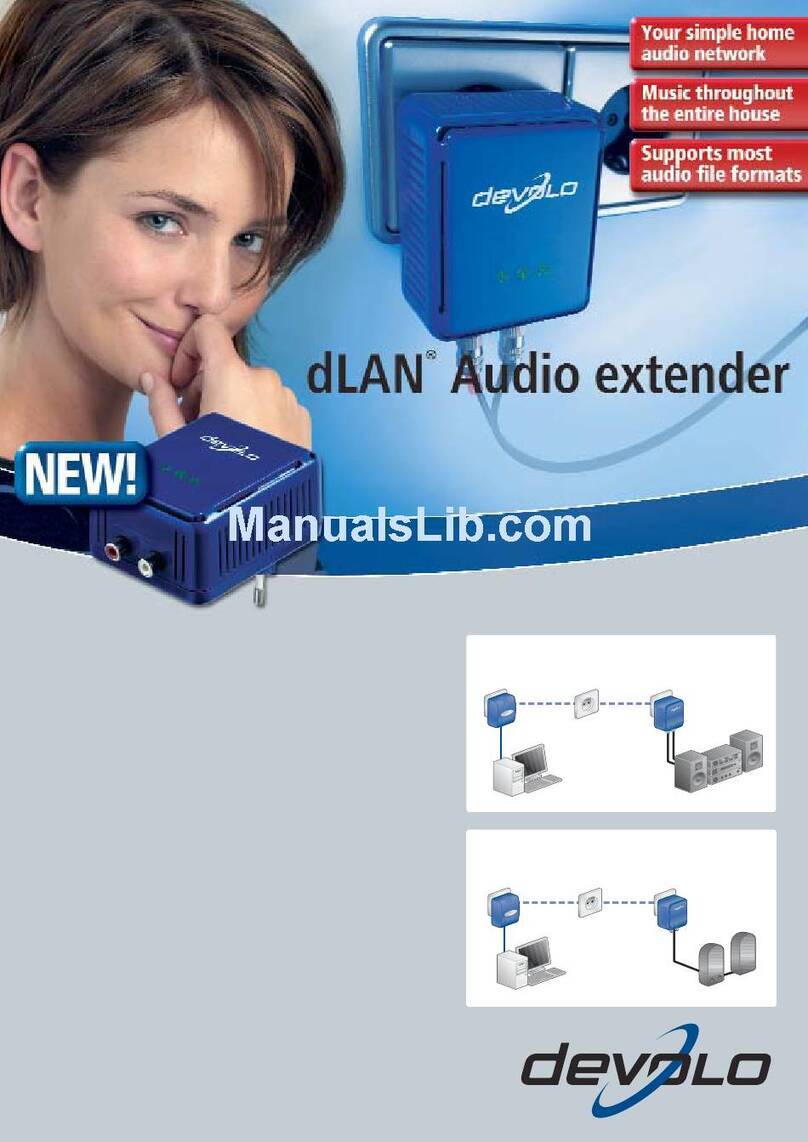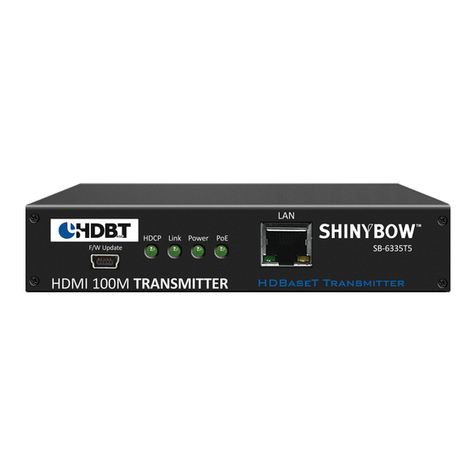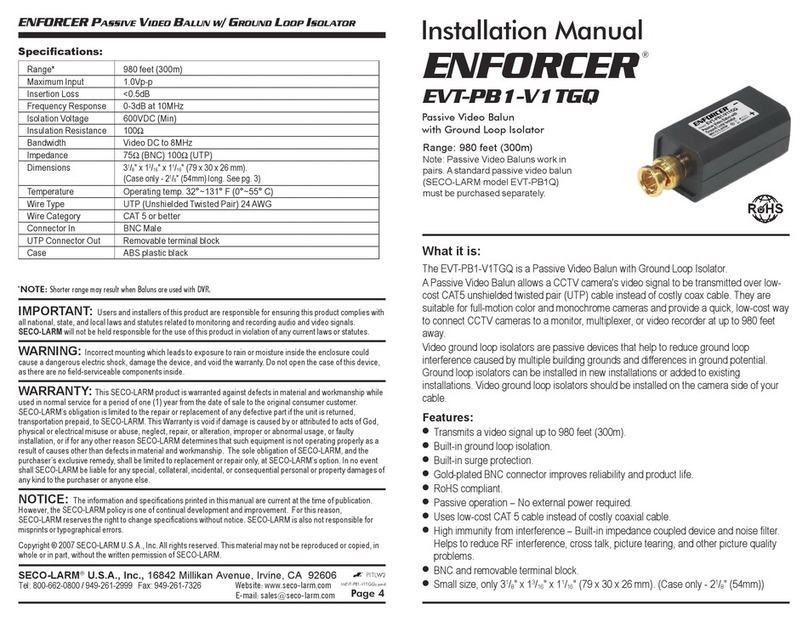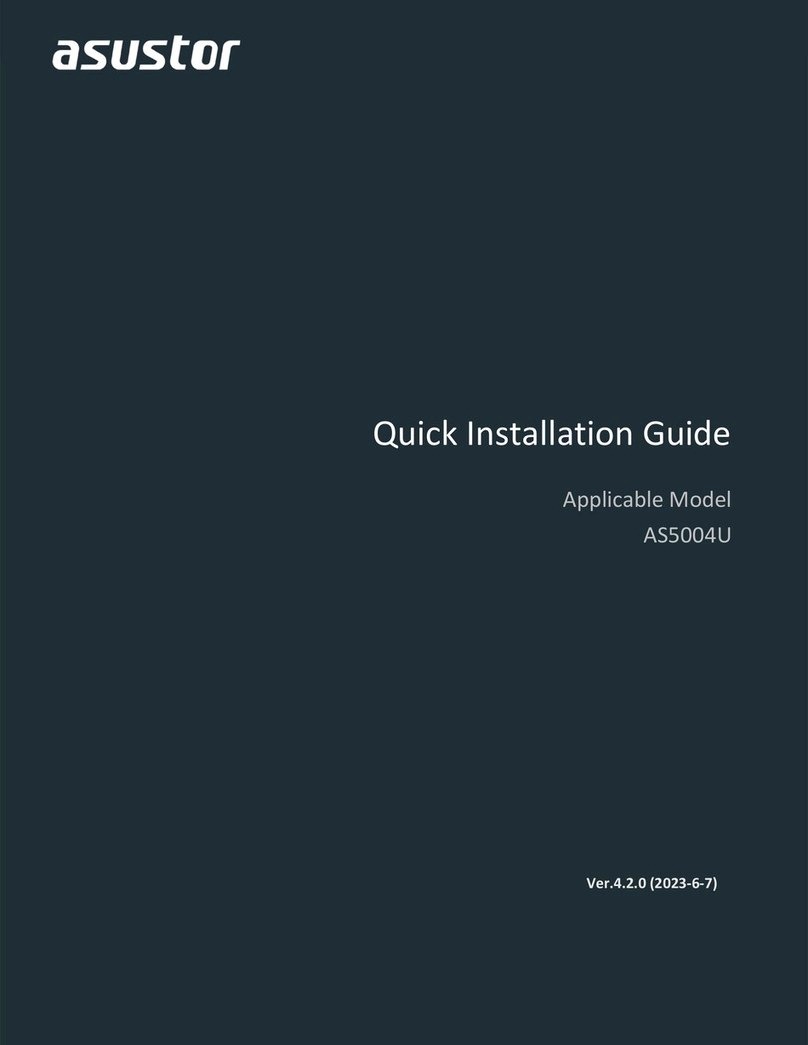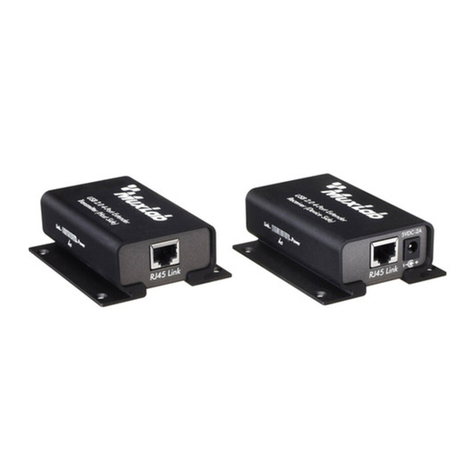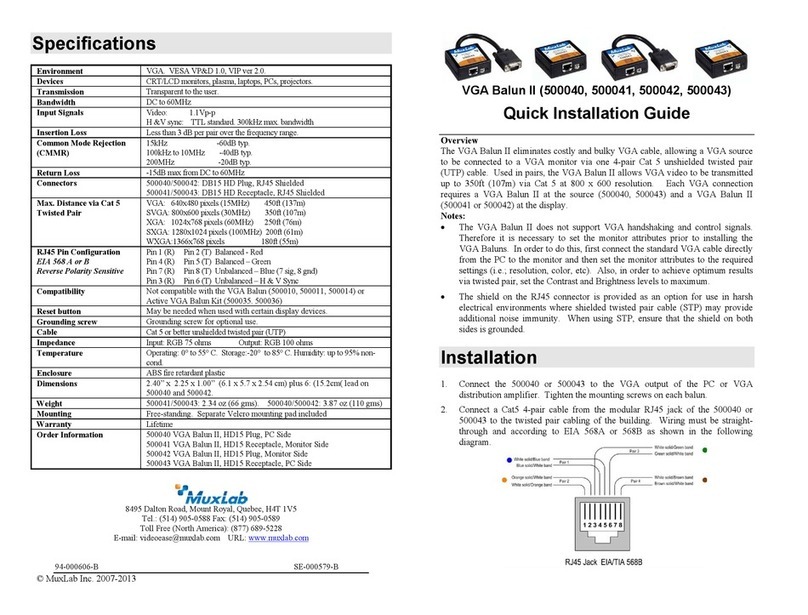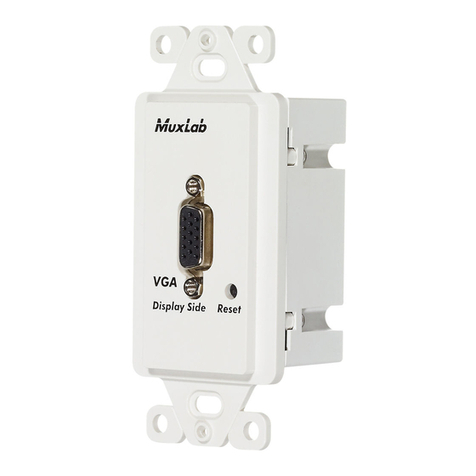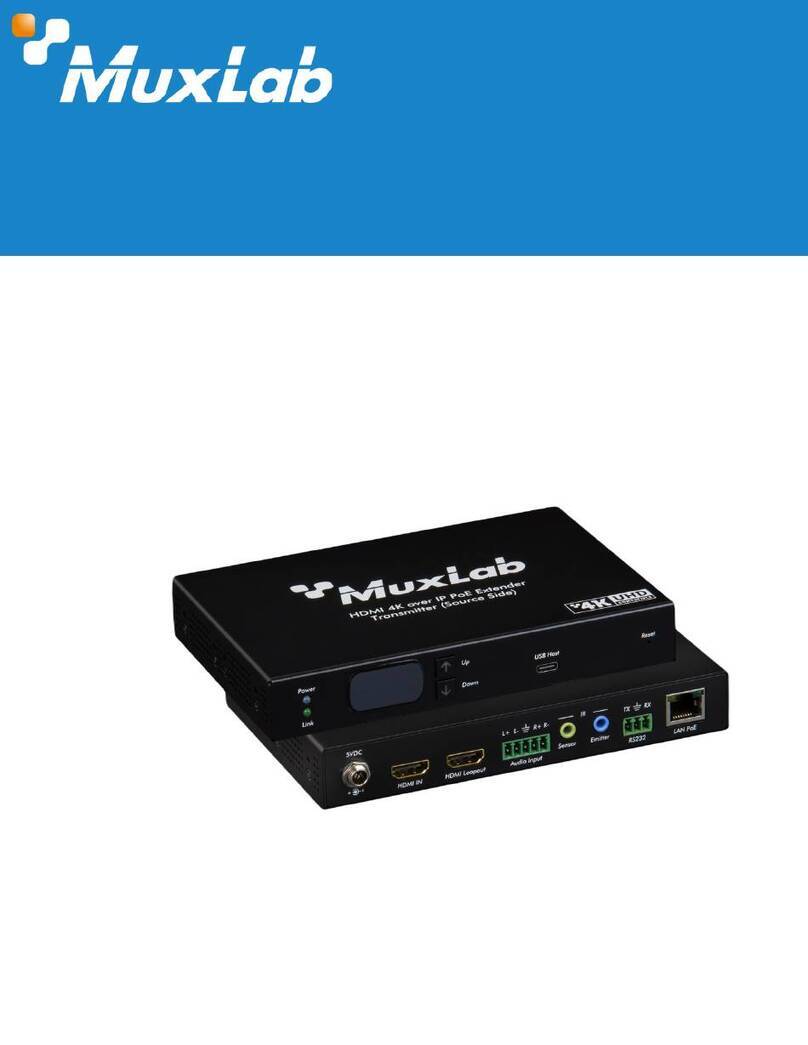
© MuxLab Inc. 2016
Installation
1. Identify the connectors on the Transmitter and Receiver as indicated on the product labels, see the
above front and rear product views for further details.
2. Verify that the distance between the HDMI Transmitter and Receiver is within MuxLab
specifications (see Specifications table for further details).
3. To install the Transmitter:
3a. Connect the Transmitter to the HDMI video source with an HDMI compliant cable.
3b. If the application is point-to-point, then connect one (1) length of Cat5e/6 (or higher)
grade UTP cable to the RJ45 LINK connector on the Transmitter. If transmitting over
the network, use an Ethernet Switch between the TX & RX unit
4. To install the Receiver:
4a. Connect the Receiver to the HDMI display equipment with an HDMI compliant cable.
4b. If the application is point-to-point, then connect one (1) Cat5e/6 cable coming from the
Transmitter, to the RJ45 LINK connector on the Receiver. If transmitting over the
network, use an Ethernet Switch between the TX & RX unit
5. If the configuration is a point-to-multipoint or multipoint-to-multipoint:
5a. You will need to use an Ethernet Switch with Gigabit porta and DHCP Server support.
In addition IGMP Protocol support is required for the multipoint-to-multipoint case.
Verify that the Ethernet Switch is configured correctly, that the DHCP Server is
enabled, and that the IGMP Protocol is enabled for multipoint-to-multipoint
applications. See the operating manual for more information about configuring the
Ethernet Switch.
5b. Connect all Transmitters and Receivers to the Ethernet Switch.
5c. Use the DIP Switches to select a unique Device ID for each Transmitter present on the
network and configure each Receiver Device ID to the corresponding selected
Transmitter. Note: This step is not necessary if the MuxLab ProDigital Network
Controller (500811) is used.
6. Powering the Transmitter or Receiver via an external power supply is only necessary where
PoE (PSE) is unavailable. If PoE is unavailable, connect the 5 VDC power supply to each
Receiver and to an AC power outlet. Next connect each Transmitter in the same manner. If
power is present, the green power LED on each Transmitter and Receiver will illuminate.
Note: Power ‘ON’ the HDMI over IP H264 Extender only after all connections have
been made.
7. Power ‘ON’ the HDMI equipment and verify the image quality.
8. This product supports IR pass-thru control. If infrared remote control is needed to control the
Source equipment from the Display, connect the IR Sensor (PN: 500994) to the 3.5mm
Stereo Jack of the receiver and the IR Emitter (PN: 500998) to the 3.5mm Mono Jack of the
Transmitter.
Note: You can differentiate the IR Sensor and the IR Emitter by looking at the 3.5 mm
plug. The IR Sensor is using a Stereo Plug (3 Contacts) and the IR Emitter a
mono plug (2 Contacts).
9. Position the IR Sensor so that it is directed at the hand-held remote control. For a clear IR
signal reception, aim the hand-held remote control at the top of the IR Sensor enclosure.
10. Position the IR Emitter as close as possible to the source’s IR Sensor (i.e. DVD player). For a
clear IR signal reception, the IR Emitter can be glued on the source’s IR Sensor. The IR
Emitter’s signal is transmitted from the side of the enclosure.
11. The following diagram illustrates a typical point-to-point LAN configuration.
Troubleshooting
The following table describes some of the symptoms, probable causes and possible solutions in regard to
the installation of the HDMI over IP H264 Extender Kit with PoE:
•Check power connections.
•Check PoE Ethernet Switch
setup.
HDMI, UTP or
Video source
•Check HDMI & UTP cables
and video source.
•For Multipoint-to-Multipoint
enable the IGMP mode on the
Gigabit Ethernet Switch.
Remote control
not directed at
the IR Sensor, or
IR Emitter not
directed at the
source.
•Make sure the IR Sensor is
directed towards the remote
and the IR Emitter towards
the equipment.
If you still cannot diagnose the problem, please call MuxLab Customer Technical Support at 877-689-
5228 (toll-free in North America) or (+1) 514-905-0588 (International).
